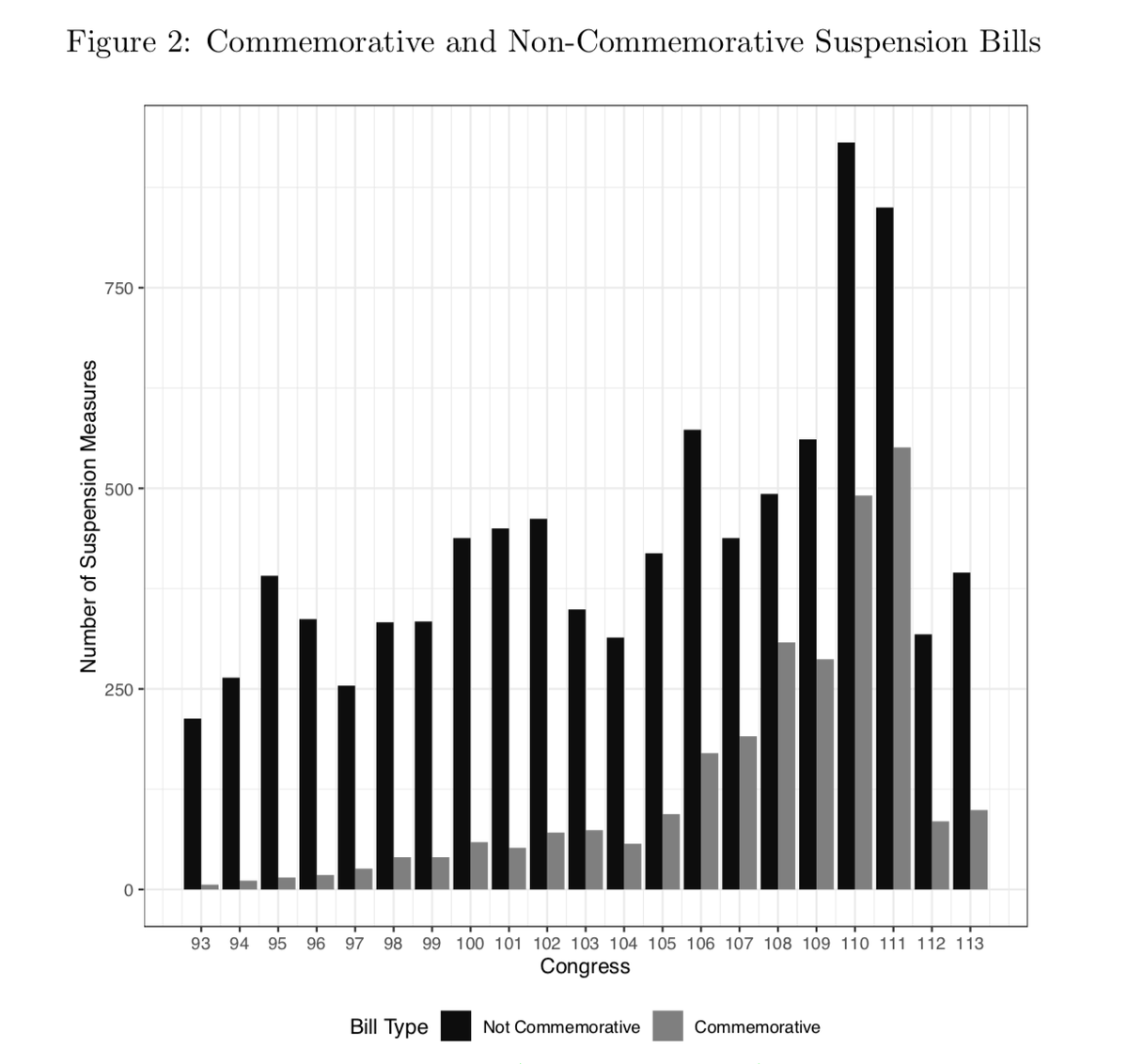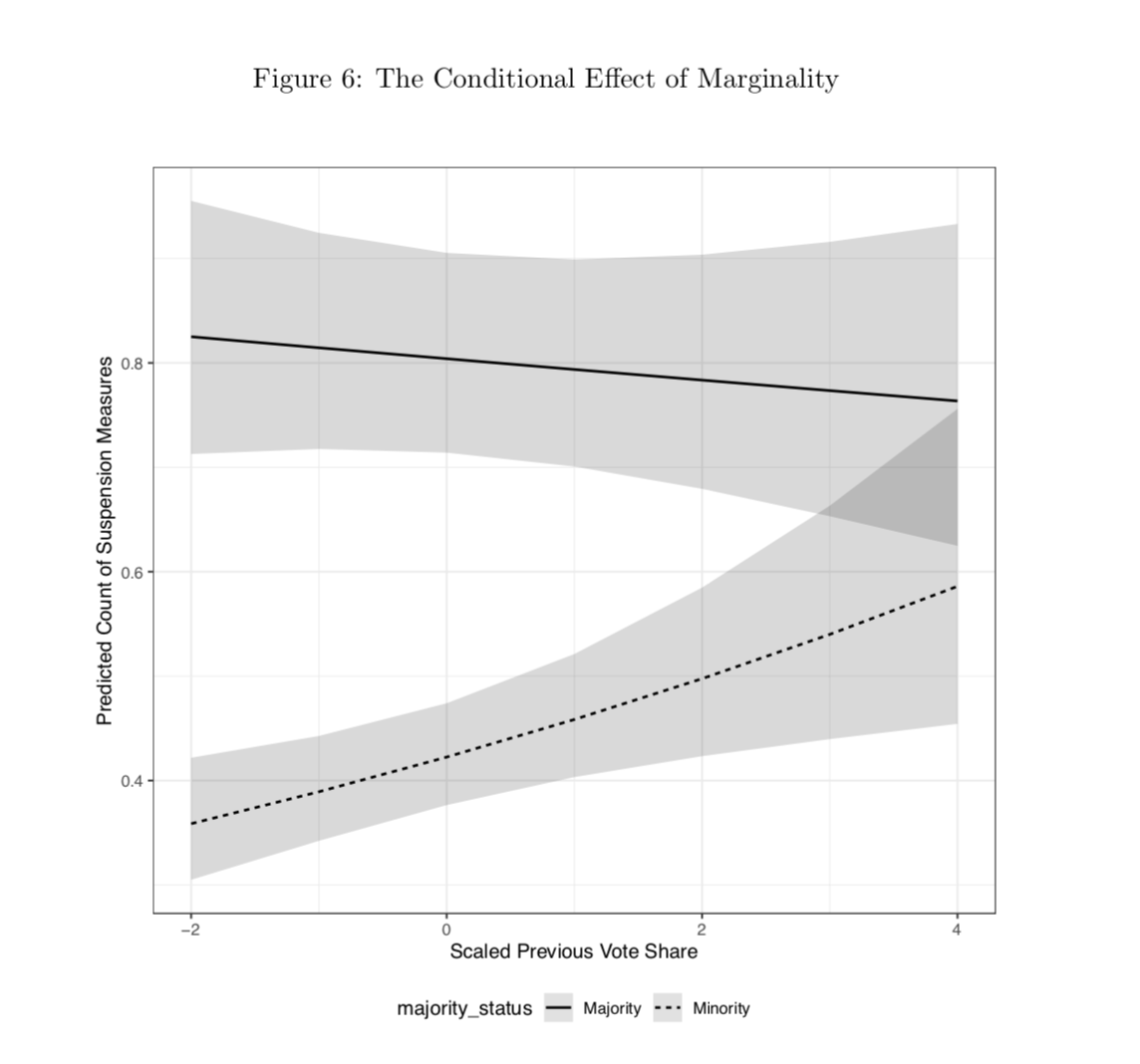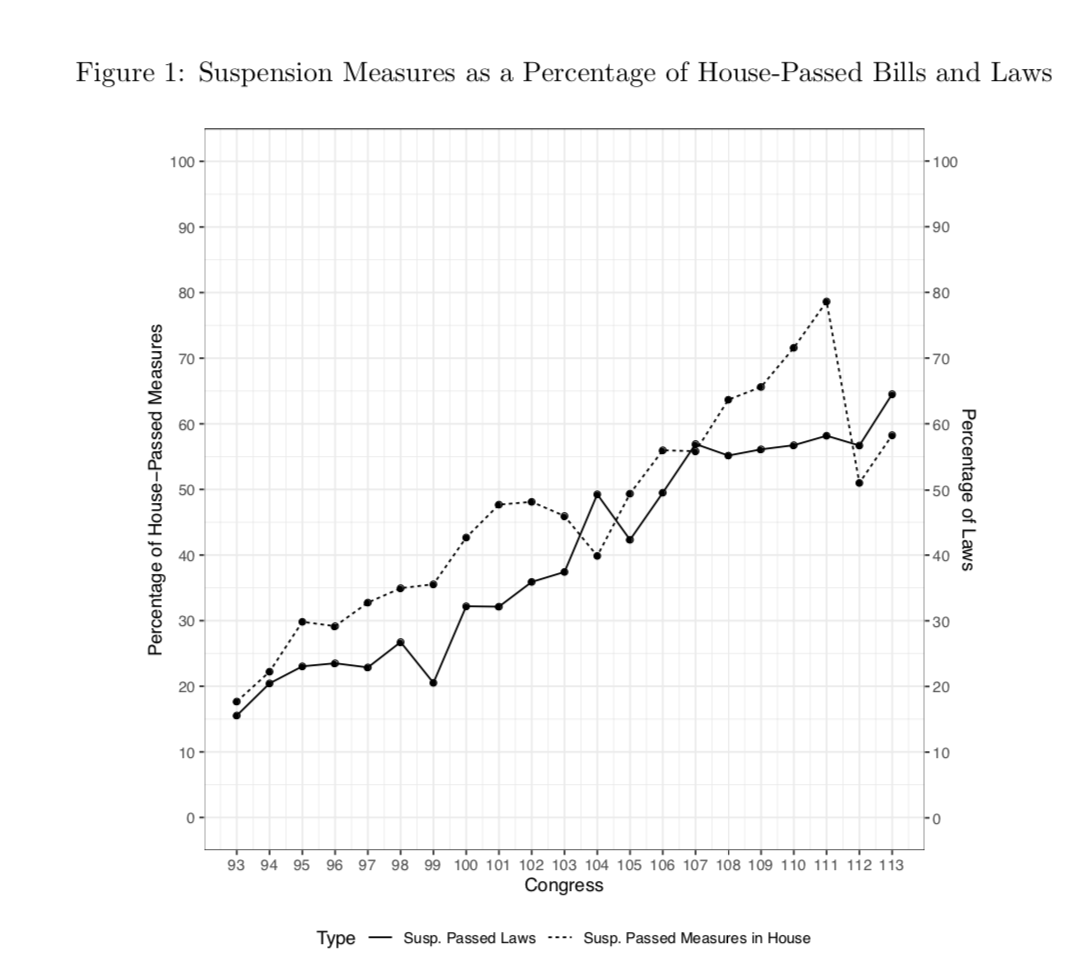Very excited that my first solo-authored publication is now out at @LSQjournal! I examine the use of suspension of the rules, an expedited procedure for bill consideration in the House that requires a 2/3rds supermajority for passage. Thread (1/n) https://onlinelibrary.wiley.com/doi/full/10.1111/lsq.12302
Suspension is interesting for a number of reasons. 1) it allows the minority party access to the legislative agenda, and the minority party has successfully expanded its share of suspension bills by credibly threatening to defeat majority-sponsored suspension legislation.
And despite popular belief (to the extent that there is a "popular belief" as it relates to suspension of the rules), the procedure is frequently used for substantive legislation, not just renaming post offices.
The main finding from the paper is that Speakers have used their discretion over which bills get considered under suspension to disproportionately benefit electorally vulnerable majority party incumbents, while largely screening out their minority party counterparts.
This is important because, in an institution with 435 members, the expedited procedure established by suspension of the rules is often the best opportunity an individual member has to address their legislative priorities.
Sadly I found this quote too late to put it in the paper:
"Particularly for lesser legislation (which may be the life-blood of individual congressmen) the chasm between standing committee and the House floor is bridged with the unchallenged power of the Speaker."
-Clem Miller
"Particularly for lesser legislation (which may be the life-blood of individual congressmen) the chasm between standing committee and the House floor is bridged with the unchallenged power of the Speaker."
-Clem Miller
The descriptive data from the article also tell an interesting story. In an era that is believed to be extremely polarized, the majority of bills passing the House do so under a supermajoritarian procedure. In an ongoing project, I develop a number of explanations for this trend.
For more about the various ways in which suspension of the rules is used– read the paper!

 Read on Twitter
Read on Twitter




